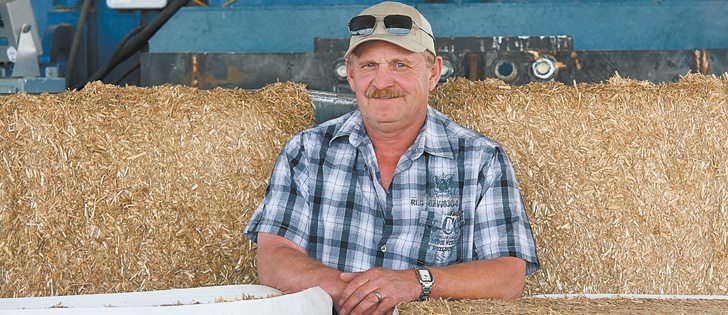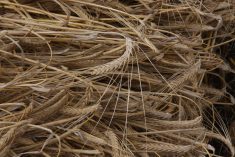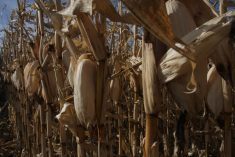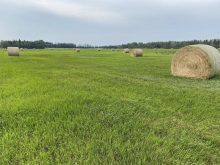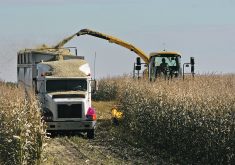Barley silage exports head east | Alberta company heat treats shipments to assuage import concerns
NAMPA, Alta. — Barley silage is the natural cattle feed in Canada, but a northern Alberta company hopes it will soon be the natural choice for Japanese cattle as well.
For the past three years, Peace River Timothy has slowly increased its dried barley silage exports to Japan. Last year, the Nampa company shipped 40,000 tonnes of silage dried and packed down to 18,000 tonnes. It takes two and a half tonnes of silage to make one tonne of dried export product.
“To be able to export it, that to me is a big accomplishment,” said Albert Thiessen, operations manager at Peace River Timothy.
Read Also

Grain farming’s hard times expected to continue
Rabobank says it will be two more years before North American grain farmers achieve break-even due to “monster” supplies and “sticky” crop input prices.
“Anybody can get into the barley silage export business; it just takes time and money.”
It also takes persistence.
It is illegal to export barley silage to Japan, Taiwan and South Korea, which bar imports of barley silage over fears the product will be contaminated with hessian fly, a pest of cereal crops.
The company worked for eight years with the Canadian Food Inspection Agency and the Japanese government to develop a processing protocol to allow shipments of hessian fly-free barley silage.
The three parties developed a heat treatment protocol to ensure the hessian fly and its larvae are killed.
The silage is heated in a special dryer to at least 90 C. Every step of the silage making and drying process is monitored to assure it follows the strict protocols established.
“When the plant is running, it’s recording.”
Thiessen said warning bells ring if the temperature of the silage leaving the dehydrator drops below 95 C. Once the silage leaves the dehydrator, it is cooled and compressed into one tonne bales. The bales are loaded into containers, trucked to Edmonton and shipped by rail to Vancouver where they’re loaded onto ships and sent to Japan.
Thiessen estimates it costs $200 a tonne to transport barley silage.
Despite the high cost, dried barley silage looked like a better alternative than timothy for the Peace River area company. It had built a good business exporting compressed timothy hay to Japan since the 1990s, shipping more than 60,000 tonnes to Japan at its peak six years ago.
However, the company had to look for an alternative export crop as ocean freight rates increased and drought hit the Peace.
Canada exported 800,000 tonnes of timothy to Japan during its peak years. Last year, less than 100,000 tonnes were exported from only a few prairie exporters.
“Everything comes down to money,” said Thiessen.
Instead of cutting and trucking timothy from 30,000 acres on farms hundreds of kilometres away, producers can grow the barley silage on about 5,000 acres of land, all close to Nampa. Peace River Timothy owner Allan Roberts is also a farmer.
“With barley silage, you reduce the risk factor,” said Thiessen.
Switching from timothy to barley silage exports has almost eliminated the weather risk of trying to harvest high-quality timothy during prairie summers. The barley is bagged for at least 45 days to go through the ensiling process before being put through the dryer.
“It’s not weather dependent.”
Before exports began, Peace River Timothy had to convince Japanese farmers and nutritionists of the benefits of using barley silage as feed.
“Silage is a known product here, but Japan has never really fed silage to their cattle,” said Thiessen.
They held “many, many seminars” in Japan.
The company exported 12,000 tonnes of silage three years ago. Last year, exports increased to 40,000 tonnes and Thiessen hopes to double that this year. Its biggest competitor is oat hay exports from Australia.
Thiessen said he receives calls and e-mails almost daily from Japanese farmers and nutritionists wanting to buy or get information on barley silage. He had a recent request for 500 tonnes of barley silage a month from a Japanese buyer.
As the only company exporting barley silage, Thiessen said there are good opportunities for expanded sales.
“Everything is related to freight and cost.”

